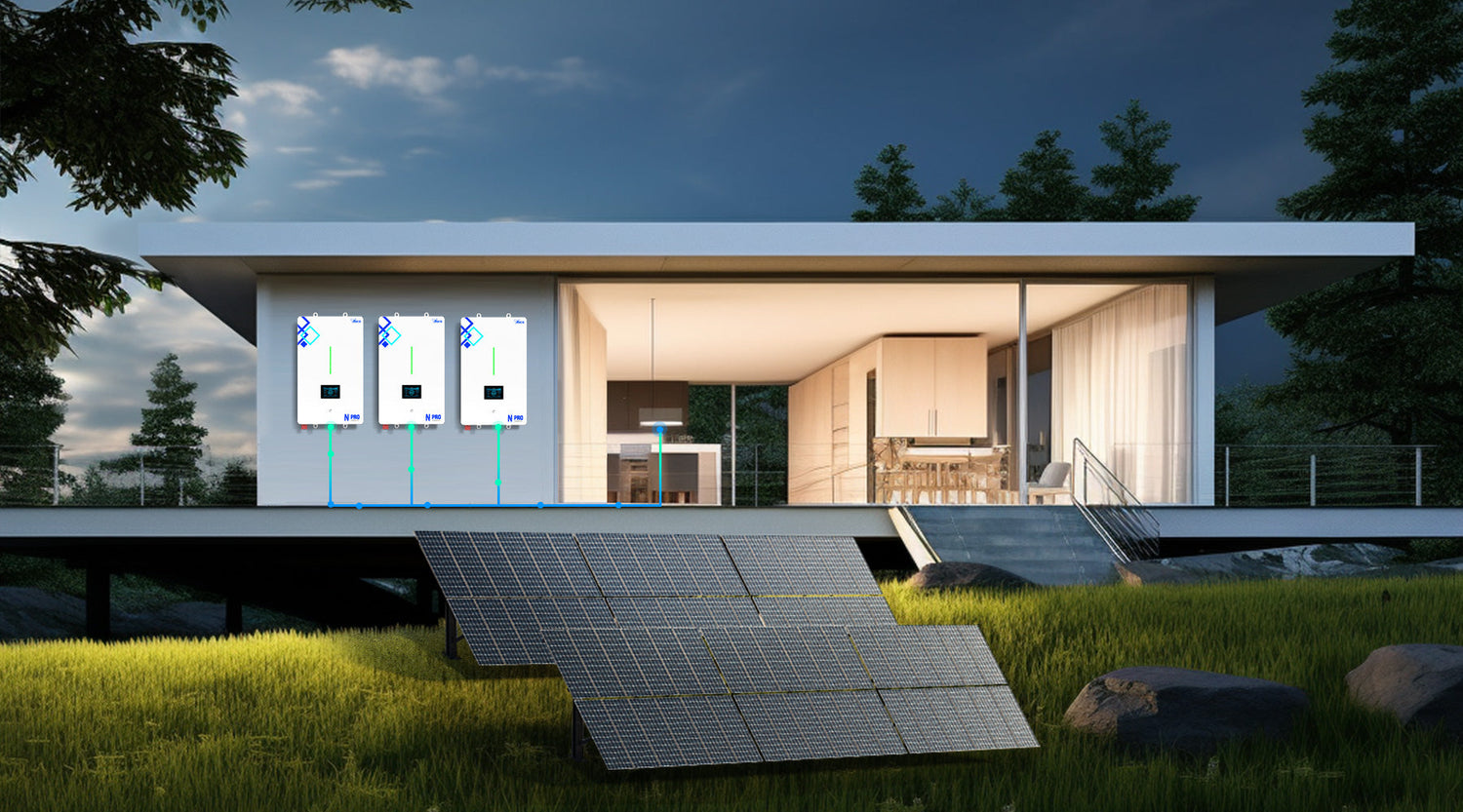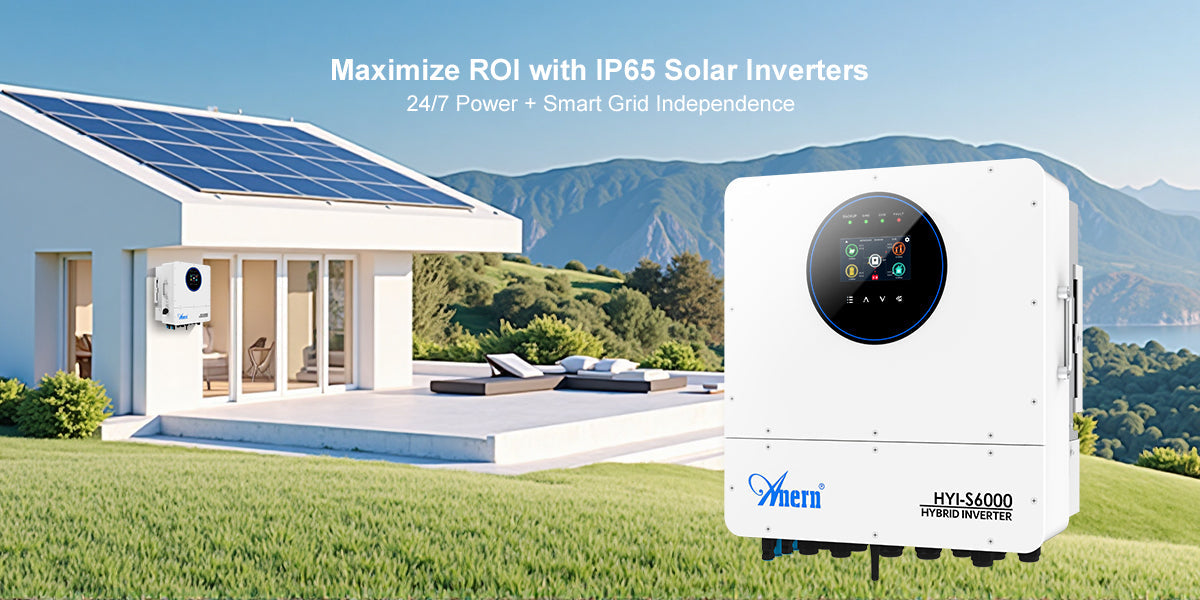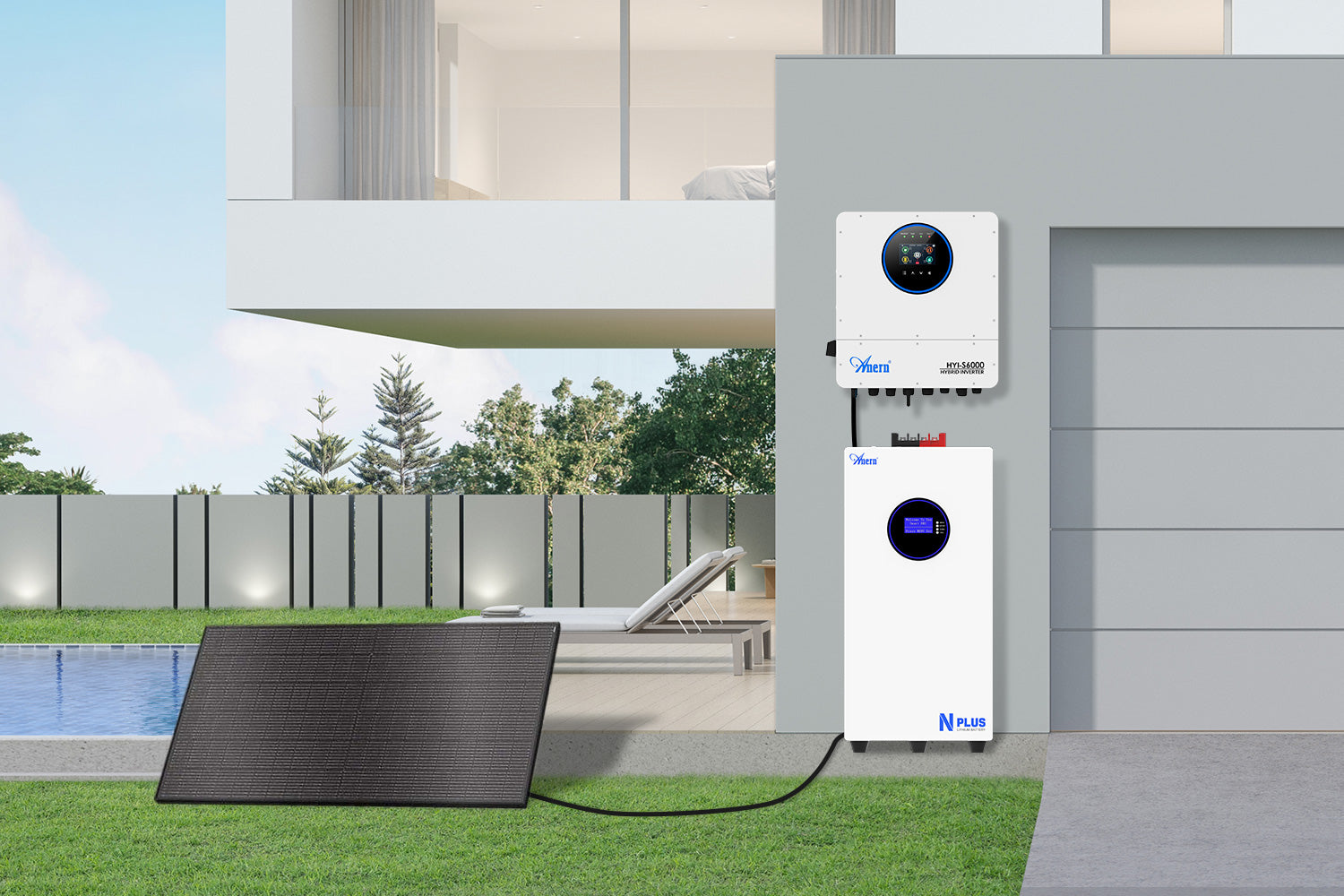Achieving energy independence means gaining control over your power supply, reducing reliance on external grids, and securing a reliable source of electricity for your home or business. For many, this concept once seemed distant, but the combination of solar power generation with robust energy storage systems has transformed it into an attainable reality. This synergy offers not just environmental advantages, but also significant economic and practical benefits, paving the way for a resilient and self-sufficient energy future.
The Solar Foundation: Harnessing the Sun's Power
Solar photovoltaic (PV) technology captures sunlight and converts it directly into electricity. Solar panels, typically installed on rooftops or open land, form the core of any solar energy system. These panels produce direct current (DC) electricity, which then passes through an inverter to be converted into alternating current (AC), the form of electricity used by most household appliances and the grid itself.
Grid-Tied Versus Off-Grid: Pathways to Autonomy
Your path to energy independence often begins with a choice: remaining connected to the existing power grid or fully disconnecting. Each option offers distinct advantages:
- Grid-Tied Systems: When your home stays connected to the grid, your solar system can divert excess electricity generated during peak sunlight hours back to the utility. This arrangement, often called net metering, allows you to offset your energy bills. When your solar panels produce less electricity, such as at night or on cloudy days, you can draw power from the grid, ensuring a continuous supply. This method provides stability and can lead to substantial savings on your electricity costs.
- Off-Grid Systems: For those seeking complete independence from utility companies, an off-grid solar solution is ideal. This setup relies entirely on your solar panels and a robust battery storage system to meet all your electricity needs. It is particularly suitable for remote locations, farms, cabins, or any property where grid access is unreliable or unavailable. An off-grid system offers ultimate self-sufficiency, ensuring power even during widespread outages or in challenging weather conditions.
The Storage Solution: Powering Through Every Hour
While solar panels excel at generating electricity during the day, sunlight is not constant. This is where energy storage systems (ESSs) become indispensable. Batteries store surplus solar energy, making it available for use whenever needed, whether after sunset, on cloudy days, or during power interruptions.
Why Batteries are Crucial for Reliability
Integrating batteries into a solar setup significantly enhances system reliability and energy independence. They act as a reservoir, capturing energy that would otherwise be lost or sent back to the grid. This stored energy is vital for:
- Nighttime Use: Powering your home after the sun goes down.
- Emergency Backup: Providing electricity during grid outages, which is crucial for essential services or life-saving medical devices.
- Optimizing Self-Consumption: Maximizing the use of your self-generated solar power, reducing dependence on utility companies.
Advanced Battery Technologies
The evolution of battery technology has made energy storage more efficient and safer. High-performance, safe, and reliable lithium iron phosphate (LiFePO4) batteries are at the core of many modern storage solutions. These batteries offer a long cycle life, stable performance, and enhanced safety features, making them a preferred choice for residential and commercial applications. The continuous innovation in battery chemistry ensures that stored energy is not only accessible but also maintained with minimal degradation over time.
Integrated Systems: The Synergy of Solar + Storage
The true power of solar and storage lies in their seamless integration. A comprehensive energy storage system (ESS) typically combines solar panels, a hybrid inverter, and advanced battery storage into a cohesive unit. This integrated approach optimizes energy flow, ensuring that power is generated, stored, and distributed efficiently to meet demand.
How Integrated ESS Works
An integrated ESS manages the entire energy cycle: solar panels convert sunlight into electricity; a hybrid inverter intelligently directs this power for immediate use, sends excess to the battery bank for storage, or feeds it back to the grid if connected; and the battery bank stores energy for later use. This intelligent management ensures that your energy supply is consistent and optimized for your specific needs.
Practical Applications and System Benefits
Integrated solar and storage solutions are versatile, providing reliable power across a spectrum of applications:
- Residential Homes: Home energy storage systems empower homeowners to reduce electricity bills, gain backup power, and lessen their carbon footprint. Whether it's a suburban house or a rural dwelling, these systems provide consistent energy.
- Remote Locations: For properties far from utility lines, off-grid solar solutions offer complete energy autonomy. This includes farms, remote cabins, and even mobile structures, ensuring power where traditional utilities cannot reach.
- Industrial and Commercial Use: Scalable solar panel kits designed for industrial demands offer robust solutions for machinery and operations, focusing on high energy demands and resilience.
Beyond electricity, energy storage extends to thermal applications. Thermal Energy Storage (TES) systems can capture heat or cold generated during periods of high renewable electricity supply. This stored thermal energy can then meet demand even when the sun is not shining or the wind is not blowing. For instance, molten salts enable concentrated solar power (CSP) plants to discharge energy overnight. Innovations with domestic hot water tanks, ice, or phase change materials (PCM) can integrate with heat pumps to provide flexible heating in winter, using energy stored from sunny summer days, and cooling in summer, from cold stored in winter. Data from the International Energy Agency (IEA) highlights that increased flexibility from TES can alleviate strain on electricity networks and reduce the need for costly grid reinforcement.
Economic and Environmental Advantages
Investing in solar plus storage is not merely an environmental decision; it is also a financially savvy one, supported by evolving market dynamics and supportive policies.
Reducing Costs and Accelerating Returns
The cost of renewable energy technologies has seen significant shifts. According to the International Energy Agency (IEA)'s 'World Energy Investment 2023' report, the Levelised Cost of Electricity (LCOE) for utility-scale solar PV and wind experienced increases in 2022, particularly in Europe and the United States, primarily due to rising capital costs. However, global power company investment plans remain robust, signaling confidence in the sector. Furthermore, policies such as the U.S. Inflation Reduction Act (IRA) are designed to provide significant tax credits for solar PV, wind, and battery storage, which can substantially reduce the effective cost of these systems and accelerate payback periods. The IEA's analysis suggests that IRA effects can lower Power Purchase Agreement (PPA) prices, making renewables more competitive.
Here's a look at the approximate Levelised Cost of Electricity (LCOE) for Solar PV across key regions (2022 USD/MWh):
| Region | Q1 2021 (Solar PV) | Q4 2022 (Solar PV) | 2023e (Solar PV) |
|---|---|---|---|
| United States | ~35-45 | ~50-60 | ~40-50 (with IRA effects) |
| Europe | ~40-50 | ~60-70 | ~55-65 |
| China | ~20-30 | ~25-35 | ~20-30 |
| India | ~25-35 | ~35-45 | ~30-40 |
(Data adapted from IEA World Energy Investment 2023)
Policy Support and The Path Ahead
Governments worldwide are implementing policies to accelerate the adoption of low-emission power. The IEA's 'World Energy Investment 2023' report highlights several key initiatives:
- United States: The Inflation Reduction Act offers tax credits for solar PV, wind, battery storage, and financial support for grids and clean power manufacturing.
- China: The 14th Five-Year Plan targets 33% renewable power consumption by 2025.
- Europe: The REPowerEU Plan aims to increase the EU 2030 renewables target to 45% and fast-track permitting processes.
- Southeast Asia: Countries like Indonesia, Thailand, and the Philippines have set ambitious renewable energy generation targets, with the Philippines aiming for 35% by 2030 and 50% by 2040.
- India: Continues to expand its Production-Linked Incentive (PLI) scheme, aiming for 50 GWh of battery manufacturing capacity and 40 GW of solar PV manufacturing capacity in the next three years.
Despite these supportive policies, challenges remain, particularly with permitting processes. The IEA notes that getting projects operational can be slow, with significant capacity awaiting permits in regions like the United States and major European markets. Addressing these practical obstacles is crucial for realizing the full potential of renewable energy investments.
Securing Your Energy Future
Combining solar power generation with advanced energy storage solutions offers a compelling path to energy independence. You gain greater control over your electricity supply, enhance reliability, and contribute to a more sustainable energy landscape. From reducing monthly utility bills to ensuring uninterrupted power during outages, the benefits are clear and tangible. As technology continues to advance and supportive policies gain momentum, embracing solar plus storage is a strategic decision for a resilient and self-sufficient future. You are investing in peace of mind, financial savings, and a healthier planet.





Leave a comment
All comments are moderated before being published.
This site is protected by hCaptcha and the hCaptcha Privacy Policy and Terms of Service apply.